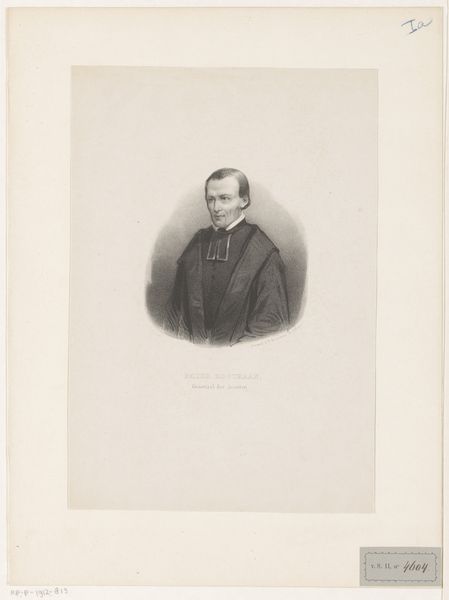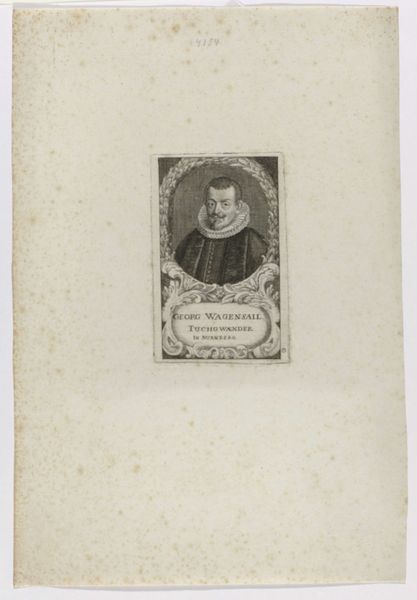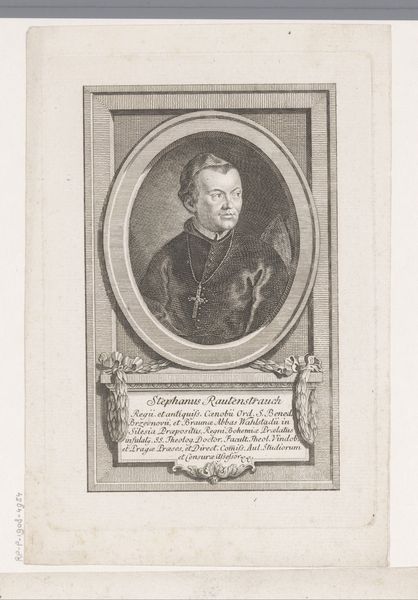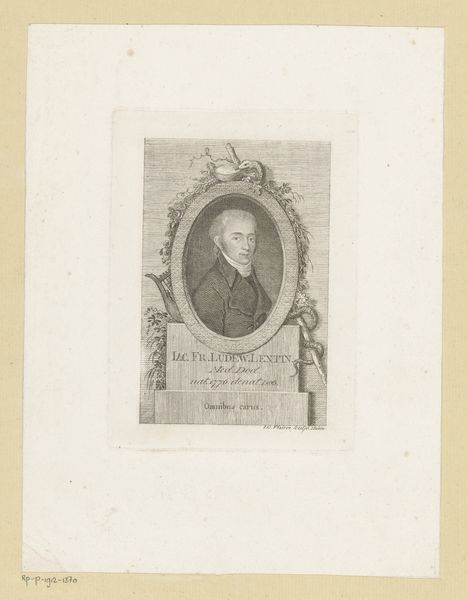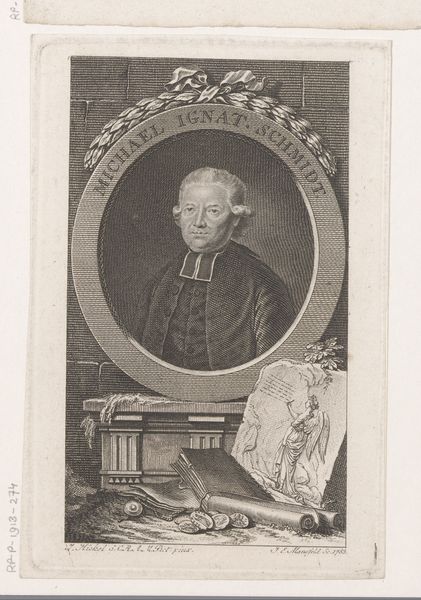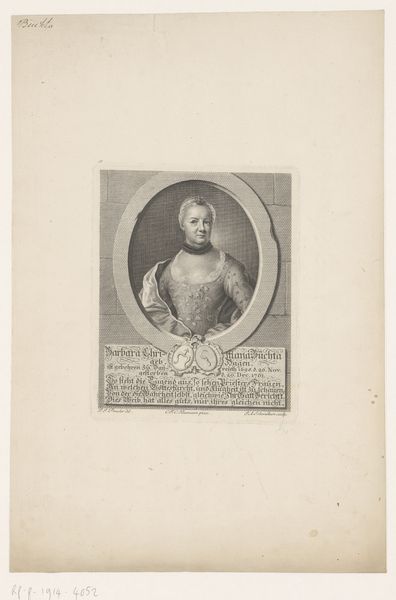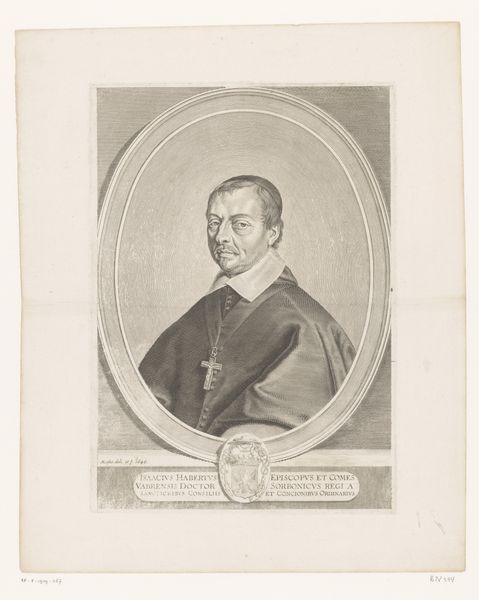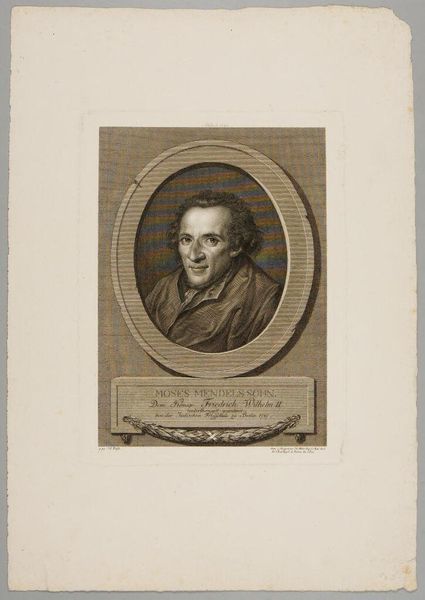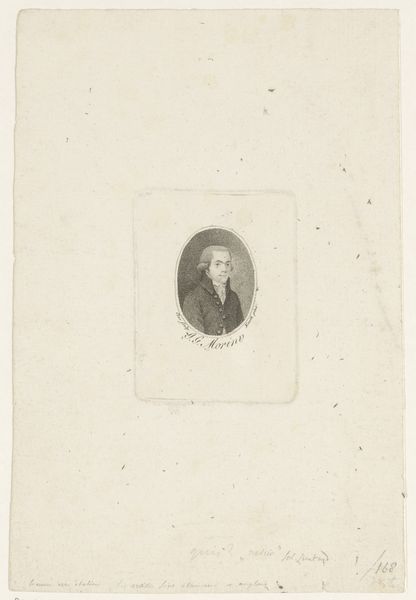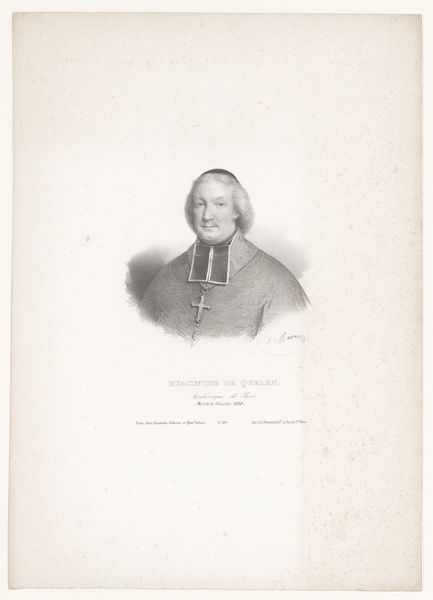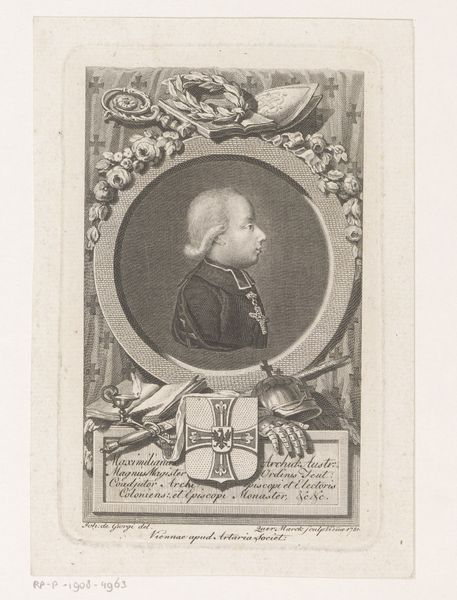
engraving
#
portrait
#
neoclacissism
#
history-painting
#
engraving
Dimensions: height 180 mm, width 110 mm
Copyright: Rijks Museum: Open Domain
Curator: Let's turn our attention to a portrait here at the Rijksmuseum. It’s an engraving titled "Portret van Joseph Haberkorn von Habersfeld," dating from sometime between 1785 and 1858. Editor: Immediately, what strikes me is the formality and meticulousness of the piece. Look at the intricate lines – it speaks of deliberate labor, the patient carving into the plate. There’s also a contrast between the smooth oval frame and the textures it encloses. Curator: Exactly. The oval format itself is loaded. Think of Roman cameos and classical ideals of virtue. This shape lends an aura of enduring dignity, reflecting Haberkorn's status. Notice how the bow at the top mirrors the floral decorations beneath the inscription, visually framing the individual within layers of symbolic recognition. Editor: That bow and those floral ornaments seem at odds with the rigidness of the engraving, though, a subtle gesture towards the rococo perhaps, lingering despite the ascendance of Neoclassicism. But let’s consider the economics here; engravings like these served as vital modes of distributing images. How do we interpret this relative ease of reproduction? Curator: Reproduction, for this image, cements a social position, ensuring the likeness of important figures spreads. We must also consider the man represented within the frame: Joseph Haberkorn, prominently named, clearly intended to be recognizable to his contemporaries. These are deliberate cultural acts, fixing an identity through visual and textual information. Editor: But the engraving process itself demands specific tools, specialized knowledge. Copperplate engraving, as I understand it, allows for finer lines than woodcuts, indicating a certain level of craftsmanship and investment into the tools and training to achieve this delicate rendering. Curator: Precisely. That craftsmanship supports and magnifies Haberkorn, turning his presence into something memorable and lasting, even didactic. These portraits become public representations, reinforcing the power structures of the day. Editor: Fascinating how this method connects the individual portrayal with wider access and distribution while requiring a specific, class-bound material practice. Curator: In a way, then, the visual and material coalesce. Editor: Leaving us to rethink traditional boundaries in how we appreciate both craftsmanship and image production in service of social power and remembrance.
Comments
No comments
Be the first to comment and join the conversation on the ultimate creative platform.
